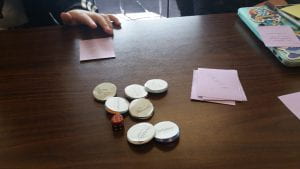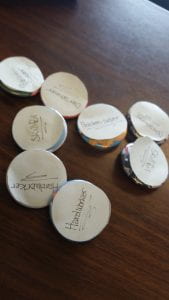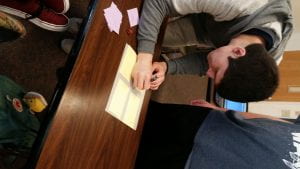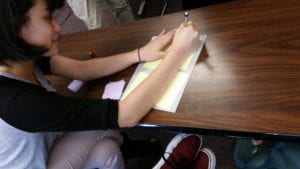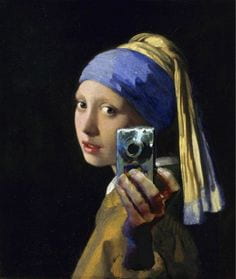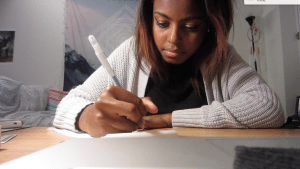Available to play here!

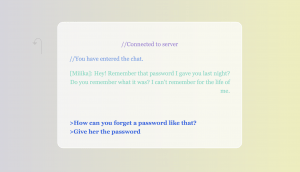
Throughout the course of the semester, I was taught many different methods of art expression and how they’ve impacted us years later. It is because of this that I was able to grow as an aspiring game designer. I really appreciated the fact that we were able to work with different mediums in order to convey our own unique messages.
That being said, playing around with different mediums helped me to develop my own aesthetic and to figure out what type of games I truly enjoyed creating: therapeutic and uplifting games, which I found interesting since my favorite genres of games tend to lean more toward violence. I really enjoy making others smile, and through games, I found that I could also express that.
For this piece in particular, I decided to focus on two topics I hadn’t really touched upon in the past: trust and deception. While keeping these in mind, I also tried to incorporate therapeutic themes into the piece.
In my initial playtest, the player was thrown into a chatroom with an anonymous user. They were then given the option to either make normal conversation with the other player or to pry into their personal life and determine who was on the other side. The goal was to build up a level of trust with the AI in order for them to open up to you.
After playtesting, I realized that the original goal of the game seemed a bit lost, so I decided to make some changes and switch it around. Now, the user enters the chat with who they think is an online friend. The narration describes how the two of you have been talking for awhile and have established a foundation of trust. Later in the game, however, you encounter a demon that disguises themselves as your best friend. Based upon their actions and narrative, it is your job to determine who is actually behind the text and to determine who it is that you trust. Previously, the idea was that the other user was trying to open up to you, but I felt as though it would be more powerful if the game took place from your own perspective.
During the beginning of the class, I really took a liking to Yoko Ono’s pieces and the interaction that was provoked from her work. Although some of them seemed silly, I found most of them to be rather therapeutic, and thus I took inspiration from Yoko’s work.
I also enjoyed seeing my peers develop their own individual styles and to see how this impacted their final projects at the end of the semester. Seeing other takes and perspectives on projects really helped to further develop my game design skills, and I believe it will be a very useful tool later on in the workplace and other aspects of life. I do wish we had more opportunities, as peers, to collaborate with one another on projects, as this could’ve been both useful and intuitive.
In the end, I thoroughly enjoyed this class and felt as though I had learned a lot. I’ve met many amazing and talented people throughout the semester who have also helped me to grow. I would highly recommend this course to future game designers, but also to any other students wishing to grow and to develop their own styles.




